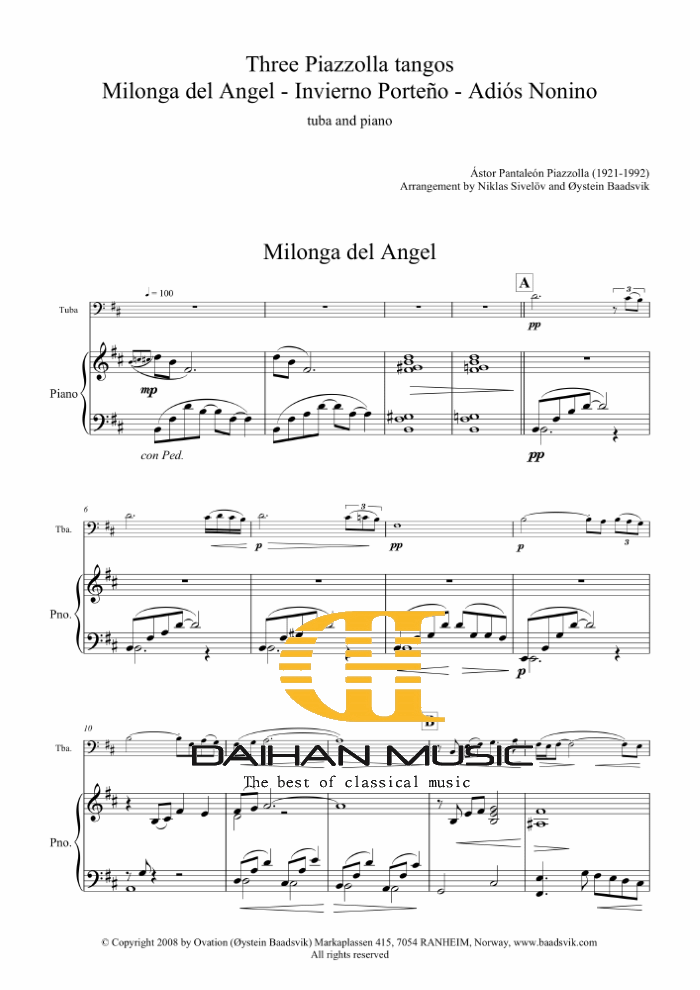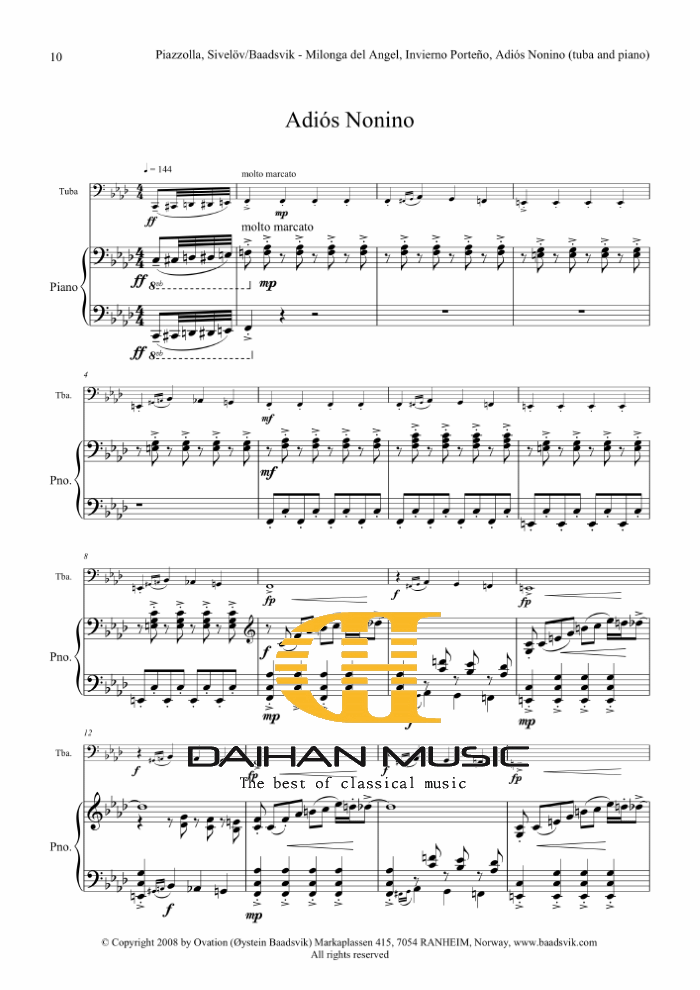
Happy Present Meet
Three Piazzolla Tangos for Tuba and Piano
- Milonga del Angel
- Invierno Porteno
- Adios Nonino
The music of Astor Piazzolla has long since left behind the label ‘tango’ and become concert music as part of the classical repertoire, without ever denying its popular origins. It was Piazzolla who managed to expand the tango’s horizons and to liberate it from the sleazy dives to which people seemed content to confine it, despite the opposition to this evolution ? or rather revolution. He studied in Paris under Nadia Boulanger who, after hearing him play the tango (‘Here is the true Piazzolla! Never let him go!’), encouraged him not to abandon his roots ? or rather to combine them with elements of jazz and classical music. The result was the ‘nuevo tango’, which mixed elements derived from jazz and an extended palette of instruments compared to the traditional tango style. Milonga del Angel was written in the mid-1960s, the composer’s most productive period. It is the second movement of a four movement suite; the term ‘Milonga’ refers to one of the original tango rhythms. Dating from 1970, Invierno Porteno is part of a four-movement cycle named Las cuatro estaciones portenas or Four Buenos Aires Seasons which, as the name suggests, is a tribute to the tango of Buenos Aires and also to the baroque composer Antonio Vivaldi, who also wrote a certain cycle of concertos on the subject of the four seasons, and traces of whose music become apparent right at the end. Adios Nonino was written in 1959 in memory of the composer’s father, who was known as Nonino. Here Piazzolla takes up a tango that he had composed in Paris some years earlier, modifying the melody but retaining the rhythmic structure.
편곡자 Baadsvik, Oystein
작곡가 Piazzolla, A


[특가상품] Catozzi Beelzebub (Air Varie) for Tuba and Piano
Marcello Sonata No.1 in F Major for Tuba and Piano (ST437)
Boccherini Concerto (from Cello Concerto No.9) for Tuba and Piano
Gallay 30 Studies Op.13 for Tuba Solo
Vasiliev 24 Melodious Etudes for Tuba Solo
Baadsvik Fnugg Red for Tuba and Piano
Baadsvik Fnugg Blue for Tuba and Wind Band (Tuba Solist part)